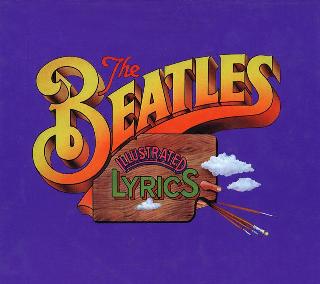Index
Home
Vorige
Rocky Raccoon
Composer(s) : Lennon and McCartney
Year : 1968
Chords/Tabs: Rocky Raccoon
Notes on "Rocky Raccoon" (RR)
KEY C Major
METER 4/4
FORM Intro -> Refrain A ->
Verse -> Verse -> 1/2 Verse (Climax) -> Refrain B ->
Verse -> Refrain A -> Refrain B -> Outro (w/complete ending)
GENERAL POINTS OF INTEREST
Style and Form
- This light-heartedly delivered number about the very serious
subject of an almost fatal romantic showdown finds Paulie dressed
up again in something ordered from the costume party store; this time,
it's a getup from the Wild, Wild American West.
- Compositionally, the song is a clever triumph of formal articulation
over rote monothematicism by virtue of controlled, subtle variation in
a number of departments. That's an excessively high-faluting way of
saying, gee, the whole three and a half minute track is played out
over the same unvarying eight-bar chord progression, and yet, rather
than sounding painfully monotonous, it creates the impression of a
something developed with the full formal scale and variety you typically
expect from a "song!"
- The secret is in the handling of the vocal style, lyrics, and
instrumentation. And it bears some comparison with the way Mssrs.
Berry and Penniman (et al) know how to create a high-level form out of
what is otherwise an unvarying series of 12-bar frames.
Melody and Harmony
- The tune stays closely within a pentatonic scale (G-A-C-D-E) for
the most part, ignoring for the moment the constant chromatic filling
out of the downward sweep from E to C. If you bother to trace it
carefully, you'll find that the places in the melody where either
of the notes B or F occur are few and far between; you might even
say they are strategically chosen: look to the half-spoken first
verse and the two scat-sung choruses.
- The harmonic content of the song consists of a simple chord progression
repeated seventeen (count 'em, 17!) times in a loop:
midline:|G |- |F# |- |F nat. |- |E |- |
bassline|A |- |D |- |G |- |C |B |
chords: |a |- |D |- |G |- |C |- |
C: vi7 V-of-V V I
- Note the descending chromatic scale fragment running through this
progression in an inner voice; you can hear this most clearly when
the backing voices show up late in the song.
- The bassline descends to B in the eighth measure, and I adjure you
to "hear it" as a simple passing note under a sustained C Major chord,
rather than an event that causes the harmony to "progress" from C to
e minor in the 6/4 (second) inversion.
Arrangement
- An acoustic guitar, simply strummed, runs throughout the piece. It
is supplemented at times by combinations of drum kit (sparingly),
bass guitar, tack piano, harmonica, and backing vocals. I think I
even hear a concertina or accordian in the last third of the track,
but perhaps that's just still more harmonica.
- Supporting instruments are progressively added AND subtracted in the
service of articulating form and and a sense of forward progress.
SECTION-BY-SECTION WALKTHROUGH
Intro
- The opening section of four measures of just acoustic guitar strumming
is nicely atmospheric, yet the a minor 7th choice of chord is tonally
ambiguous.
Assorted Verses and Refrains
- Watch how Paul sculpts something approaching traditional song
form out of his 17 looped iterations, especially impressive when
you consider that the ballad-level "story" is told almost continuously,
throughout:
----------------------------------------------------------------------
- Call the first two loops an extension of the intro, or perhaps
and "easing ones way" into the song, proper. In contrast to the
rest of the song, this pair is half sung with the words declaimed
against the underlying beat, Paul's ol' Western accent is commically
exaggerated, and the rhyme scheme tentative, at best.
1. Somewhere ...
2. ...eye. Rocky didn't like that ...
----------------------------------------------------------------------
- The next pair could be called a verse section, but I'm going to
take the liberty of labelling it "Refrain A" because of the way
in which the title phrase appears on the downbeat of the section,
and the way in which the same gesture reappears much later in
the song.
- The first line of each couplet contains its own internal rhyme
(Raccoon/room, come/gun), but the pair of them is held together by
the rhyme created by the end of each couplet (Bible, rival).
- Paul's singing now with his full voice, and the addition of the
harmonica help set this off from what preceded.
3. Rocky Raccoon checked into his room ...
4. Rocky had come ...
----------------------------------------------------------------------
- Next is a "plain" Verse, with the story continued, and the rhyming
scheme just like the previous one. Add cymbals and bass guitar to
the backing track.
5. His rival it seems ...
6. Her name was Magill ...
----------------------------------------------------------------------
- Followed by another "plain" Verse, with the same rhyming scheme again.
Now add some drums.
7. Now she and her man ...
8. A - Rocky burst in ...
----------------------------------------------------------------------
- The climax (and EXACT midpoint) of the song includes only a single
loop iteration; the only place like this in the whole track!
9. But Daniel was hot ...
----------------------------------------------------------------------
- "Refrain B" shifts to scat singing in the lyrics and adds the
piano to the backing track. We're back in the paired loop business.
The tempo remains constant, but the shift here to an oompah polka
beat sets this section off from the rest of the song.
10. Da da da da da ...
11. Do do do do do ...
----------------------------------------------------------------------
- The next verse returns to the earlier rhyming scheme and strumming
beat, and it drops the piano from the backing track. Do we also have
a return of the harmonica, or is this a new part for concertina or
the like?
12. Now the doctor came in ...
13. He said, Rocky you met your match ...
----------------------------------------------------------------------
- Let's call the next section the return of "Refrain A." True, the
story continues here, but the echo of the title phrase on the downbeat
in combination with another reference to a certain edition of the
Holy Bible usually found in hotel rooms resonates strongly, don't you
think? Note the unique application here of the backing vocals.
14. Rocky Raccoon, he fell back in his room ...
15. Gideon checked out ...
----------------------------------------------------------------------
- And of course, we complete the song with a reiteration of the
scat sung "Refrain B."
16. Da da da da da ...
17. Do do do do do ...
Outro
- Just where an 18th iteration of the loop might begin, the song ends
with an implied 4 measures of the C Major (I) chord sustained, a sort
of balancing out the 4 measure intro.
SOME FINAL THOUGHTS
- Continuing with our series of Esher demo checks ... the earlier
run through of this song (not to be confused with the studio outtake
of it on Anthology volume 3) is completely missing the loop iterations
labelled here as 1 & 2 (the extended introduction) and 12 & 13 (the
Doctor verse). The addition of the former sets a more befitting
leisurely pace for the song, and the latter spreads out what is
otherwise an unrelieved series of "Refrains."
- On the detailed level, we find that in the demo, Paul doesn't
include the bassline passing note, B, in measure eight until
the very middle of the song. I'm wondering if the idea of the
passing note first occured to him in real time as he performed
this demo, or he was thinking of it all along and merely "forgot"
to play it until halfway through.
- Yeah, I know it's a nitpicking point, but remember: if it weren't
really there then I couldn't call your attention to it :-) Besides,
this particular question I'm wondering about actually has a definitive
answer; if only Paul might remember; or care about it.
Regards,
Alan (awp@world.std.com)
---
"You have to love her." 010598#141
--- 5-2-4-30-40
Copyright (c) 1995 by Alan W. Pollack
All Rights Reserved
This article may be reproduced, retransmitted, redistributed and
otherwise propagated at will, provided that this notice remains
intact and in place.
Ook op The Beatles [White Album]:
(c) 2024 Serge Girard


 (c) Alan Aldrigde, The Beatles Illustrated Lyrics
(c) Alan Aldrigde, The Beatles Illustrated Lyrics